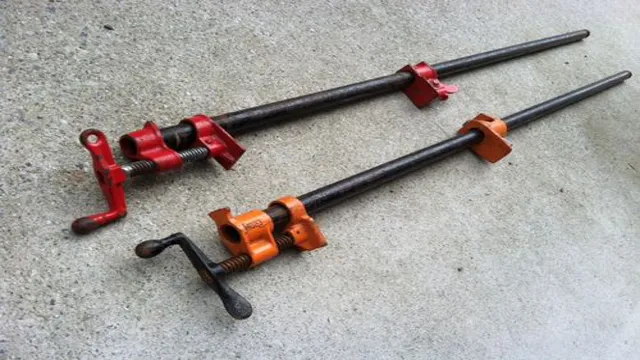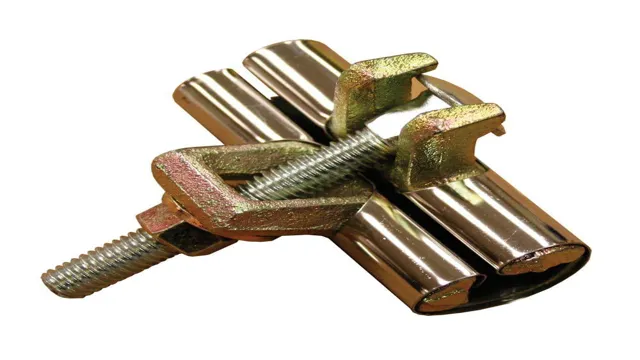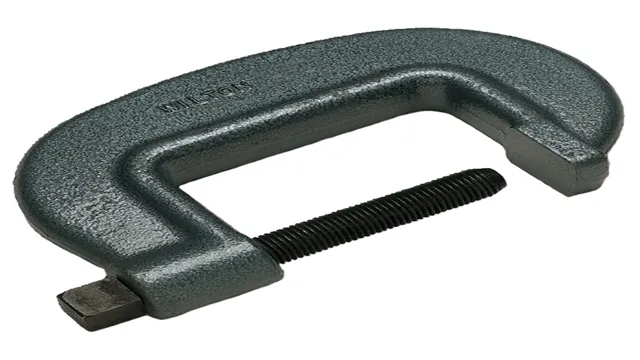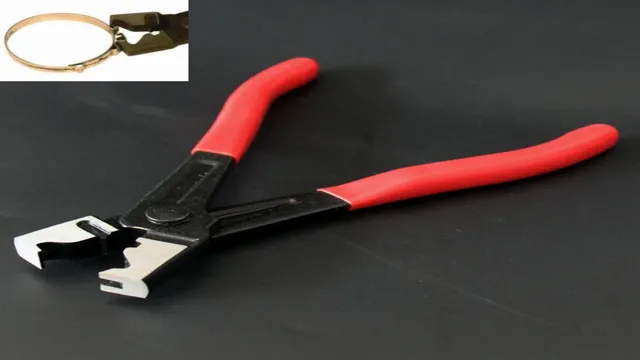How Tight Should Exhaust Clamps Be? The Ultimate Guide for Optimal Performance
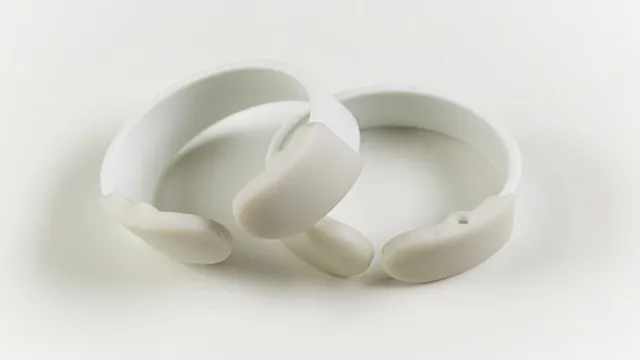
Have you ever found yourself in a bind when it comes to tightening exhaust clamps? Maybe you’ve wondered if they should be tightened until they can’t be moved or if a little wiggle room is okay. It’s a common question among automotive enthusiasts and novices alike. After all, properly secured exhaust components are critical to the performance and safety of your vehicle.
In this blog post, we will explore the ideal degree of tightness for exhaust clamps and provide some tips to ensure a secure and effective fit. So sit back, rev your engine, and let’s dive in!
Factors Affecting Exhaust Clamp Tightness
When it comes to installing exhaust clamps, it’s crucial to ensure that they’re tightened properly to avoid any leaks. The question of how tight the clamp should be is dependent on various factors. Firstly, the type of clamp being used, such as a V-band clamp or a U-bolt clamp, will determine the torque required.
Additionally, the diameter of the pipe being clamped will also play a role in determining the tightness required. A larger diameter pipe will require a tighter clamp compared to a smaller diameter pipe. Other factors that can affect the tightness of the clamp include the type of exhaust system, the material of the pipes and clamps, and the environment the vehicle will be operating in.
It’s essential to follow manufacturer instructions and torque specifications when installing exhaust clamps to ensure they’re tightened properly and avoid any issues down the line. In conclusion, the answer to how tight exhaust clamps should be is not straightforward and will depend on various factors to ensure the installation is secure and leak-free.
Temperature and Vibration
Temperature and vibration can have a major impact on the tightness of exhaust clamps. When the engine is running, it generates a lot of heat which causes the exhaust system to expand. As a result, the clamps may become loose, creating a potential risk for leaks.
Similarly, the engine also produces vibrations that can cause the exhaust pipes and clamps to move around, further loosening them. Over time, this constant movement can lead to damage to the clamp or even the exhaust pipe. It’s important to make sure that the clamps are securely tightened, and that they are made from high-quality materials that can withstand the heat and vibrations.
By regularly inspecting and maintaining the exhaust system, you can help ensure that your vehicle is running smoothly and safely on the road. So, next time you hear a strange noise coming from your car’s exhaust, don’t ignore it! Addressing the problem sooner than later can save you from expensive repairs down the line.
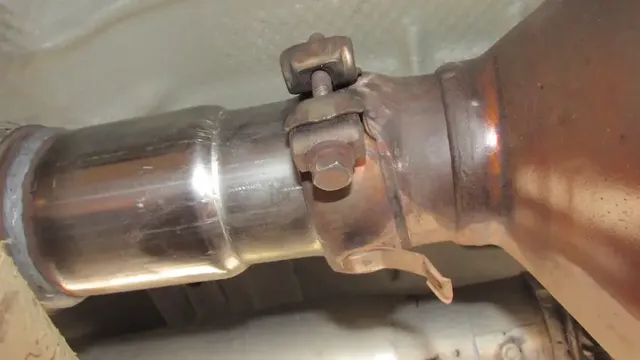
Exhaust Pipe Material
When it comes to securing exhaust pipes, achieving a tight clamp is essential to preventing gas leaks and ensuring that the system operates at maximum efficiency. However, some factors can affect the tightness of the clamp. One of these is the exhaust pipe material.
Different materials possess different properties that can impact how successfully the clamp keeps the pipe in place. For instance, stainless steel exhaust pipes tend to be harder, which can make them more resistant to wear and tear and provide a better surface for the clamp to grip. However, they can also be slippery, which might make it harder to get a secure hold.
On the other hand, aluminized steel pipes are easier to clamp tightly, but they are also softer and might not be as durable. When selecting an exhaust pipe, it’s important to consider not only the desired performance but also the materials that will be compatible with the clamping system.
Clamp Material and Design
Exhaust Clamp Tightness One of the critical factors affecting exhaust clamp tightness is the material and design of the clamp. The exhaust system of a vehicle experiences intense vibration and movement, making it essential to choose a clamp designed to withstand these forces. The material used in the clamp plays a crucial role in ensuring a tight seal between the different components of the exhaust system.
Stainless steel, for instance, is known for its corrosion-resistant properties and can provide a sturdy grip. Moreover, clamp design can influence how well it can hold two sections of the exhaust system together. A T-bolt clamp, for example, uses a two-piece band and a bolt to provide a more secure hold than a standard U-bolt clamp.
Therefore, when choosing an exhaust clamp, it’s essential to consider such factors to enhance the durability and function of your vehicle’s exhaust system. So, what do you look for in an exhaust clamp?
Recommended Tightness for Exhaust Clamps
If you’re installing new exhaust clamps or tightening up an existing one, the question of how tight to make it can arise. The general recommendation is to tighten the clamp until it feels snug but not too tight. Over-tightening can lead to damage, while under-tightening can cause leaks, so finding the right balance is key.
Some manufacturers provide torque specifications for their exhaust clamps, which can be helpful if you have a torque wrench on hand. Another tip to keep in mind is that the clamps should be tightened evenly to ensure an even seal around the exhaust pipe. With a little care and attention, you can get your exhaust clamps tightened just right and keep your vehicle running smoothly.
Manufacturer’s Recommendation
As a responsible car owner, it’s crucial to know the recommended tightness for your exhaust clamps. Most manufacturers have specific guidelines for tightening exhaust clamps to ensure optimal performance and safety. The recommended torque specification for exhaust clamps varies based on the size and type of clamp, as well as the size of the exhaust pipe.
It’s important not to over-tighten or under-tighten, as both can lead to issues down the road. Over-tightening can cause the exhaust pipe to warp or crack, while under-tightening can result in exhaust leaks and reduced horsepower. As a general rule of thumb, it’s best to follow the manufacturer’s recommendations for your particular vehicle.
Keeping the exhaust clamps at the right tightness can help prevent issues like noisy exhaust, gas leaks, and damage to other parts of the exhaust system. Don’t neglect this important aspect of car maintenance, and always refer to the recommended torque specification for your vehicle’s exhaust clamps.
Professional Mechanic’s Advice
As a professional mechanic with years of experience working on exhaust systems, I am often asked about the recommended tightness for exhaust clamps. The truth is, there is no one-size-fits-all answer to this question. The tightness of exhaust clamps varies depending on the type of clamp being used and the size of the pipe it is being applied to.
In general, it is important to ensure that the clamp is tight enough to prevent any leaks, but not so tight that it damages the pipe or crushes the gasket. A good rule of thumb is to tighten the clamp just enough so that it feels snug, but not so tight that it is difficult to remove later on. When in doubt, it is always best to consult the manufacturer’s recommendations or seek advice from a professional mechanic.
Overall, proper installation and tightness of exhaust clamps are crucial for optimal performance and longevity of the exhaust system.
DIY Method for Tightening Exhaust Clamps
When it comes to exhaust clamps, it’s crucial to tighten them to the recommended torque to avoid any leaks or damage. The recommended tightness differs depending on the type of clamp and exhaust system, but it’s generally around 40-50 lb-ft. You can use a torque wrench to achieve the right amount of torque, but if you don’t have one, there’s a DIY method you can use.
Start by tightening the clamp as much as you can by hand, then use a ratchet and socket to tighten it further. Keep tightening until you can no longer move the socket, but avoid over-tightening as it can damage the clamp or exhaust system. It’s also a good idea to check the clamp’s tightness periodically to ensure it’s still secure over time.
By following these steps, you can ensure your exhaust clamps are tightened to the recommended torque for optimal performance and safety on the road.
Consequences of Over-Tightening or Under-Tightening
When it comes to exhaust systems, getting the right amount of tightness on the clamps is critical. Over-tightening or under-tightening the clamps can cause serious consequences. Under-tightening can lead to the exhaust components becoming loose, creating leaks in the system.
This can cause the exhaust to emit toxic fumes, which can be dangerous to breathe in. Over-tightening, on the other hand, can cause deformation of the exhaust components. This can create stress points that could eventually lead to cracks or breaks in the exhaust, which can be costly to repair.
So, how tight should exhaust clamps be? Generally, it is recommended to tighten the clamps to the manufacturer’s specifications, which can usually be found in the owner’s manual. It’s important to make sure the clamps are tight enough to create a good seal, but not so tight that they cause damage to the system. A good rule of thumb is to tighten them until they are snug, but not overly tight.
By getting the right amount of tightness on the clamps, you can ensure that your exhaust system operates efficiently and safely.
Air or Gas Leakage
Air or Gas Leakage is a common issue that occurs in mechanical equipment, and if left untreated, it can cause significant damage. Over-tightening or under-tightening of equipment can result in air or gas leakage. Over-tightening can cause the equipment to deform where the sealing gasket is not able to provide an adequate seal.
Under-tightening, on the other hand, can result in insufficient contact pressure between the equipment and the sealing gasket. Both scenarios can lead to air or gas leakage. The consequences of air or gas leakage can be harmful to both human health and the environment.
Leaking equipment can lead to the release of harmful gases, which can cause health hazards if exposed to humans. Additionally, the release of gases also contributes significantly to environmental pollution. It is crucial to ensure that mechanical equipment is appropriately tightened to maintain the necessary seal to prevent air or gas leakage.
Doing periodic check-ins with the equipment can prevent issues from arising and allow for adequate repair before the damage is beyond repair.
Excessive Wear or Damage to the Exhaust System
Excessive wear or damage to the exhaust system can be a major issue for any vehicle owner. One cause of such damage can be over-tightening or under-tightening of the exhaust system. Over-tightening can lead to the threads being stripped, which can cause severe damage to the exhaust system.
Under-tightening can also cause issues, as the exhaust system may not be adequately secure and can become dislodged, leading to severe damage or even a hazardous situation for the driver and passengers. It is important to follow the manufacturer’s recommended torque specification when installing or tightening the exhaust system components. In addition to preventing damage to the exhaust system, following these specifications can also help to decrease overall exhaust noise and improve engine performance.
When it comes to the exhaust system, always remember that proper tightening is key to protecting your vehicle and ensuring a smooth and safe ride.
Conclusion
In the battle between loose and tight exhaust clamps, the answer lies somewhere in the middle. It’s like Goldilocks and the Three Bears – not too tight, not too loose, but just the right amount. You want to ensure a secure fit to prevent leaks and rattling, but you don’t want to crush your pipes with overly aggressive tightening.
So, just like finding the perfect bowl of porridge, finding the right amount of tightness for your exhaust clamps requires a delicate balance. May your clamps be snug, your pipes free from leaks, and your ride run smoothly.”
FAQs
What is the purpose of exhaust clamps?
Exhaust clamps are used to ensure a tight seal between two exhaust pipes, preventing any air leakages.
How tight should exhaust clamps be?
It is recommended that exhaust clamps be tightened to approximately 18-20 ft-lbs of torque.
Can overtightening exhaust clamps cause issues?
Yes, overtightening exhaust clamps can cause damage to the exhaust system by warping or cracking the pipes.
Can undertightening exhaust clamps cause issues?
Undertightening exhaust clamps can cause the exhaust pipes to separate, leading to air leakages and potentially dangerous fumes entering the cabin.
Should exhaust clamps be re-tightened after installation?
Yes, it is recommended that exhaust clamps be re-tightened after approximately 100 miles of driving to ensure they have settled in properly.
What type of material should exhaust clamps be made of?
Exhaust clamps are commonly made of stainless steel, which provides durability and resistance to corrosion.
Can exhaust clamps be reused?
Yes, exhaust clamps can be reused, but it is important to ensure they are not damaged or worn before reusing them.

